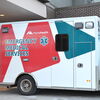Processing Your Payment
Please do not leave this page until complete. This can take a few moments.
- News
-
Editions
-
- Lists
-
Viewpoints
-
Our Events
-
Event Info
- Business Leaders of the Year Reception 2025
- Women's Leadership Forum 2025
- On the Road with Mainebiz in Bethel
- Health Care Forum 2025
- On The Road with Mainebiz in Greenville
- On The Road with Mainebiz in Waterville
- Small Business Forum 2025
- Outstanding Women in Business Reception 2025
- On The Road with Mainebiz in Bath
- 60 Ideas in 60 Minutes Portland 2025
- 40 Under 40 Awards Reception 2025
- On The Road with Mainebiz in Lewiston / Auburn
- 60 Ideas in 60 Minutes Bangor 2025
Award Honorees
- 2025 Business Leaders of the Year
- 2024 Women to Watch Honorees
- 2024 Business Leaders of the Year
- 2023 NextUp: 40 Under 40 Honorees
- 2023 Women to Watch Honorees
- 2023 Business Leaders of the Year
- 2022 NextUp: 40 Under 40 Honorees
- 2022 Women to Watch Honorees
- 2022 Business Leaders of the Year
-
-
Calendar
-
Biz Marketplace
- News
- Editions
- Lists
- Viewpoints
-
Our Events
Event Info
- View all Events
- Business Leaders of the Year Reception 2025
- Women's Leadership Forum 2025
- On the Road with Mainebiz in Bethel
- Health Care Forum 2025
- On The Road with Mainebiz in Greenville
- + More
- On The Road with Mainebiz in Waterville
- Small Business Forum 2025
- Outstanding Women in Business Reception 2025
- On The Road with Mainebiz in Bath
- 60 Ideas in 60 Minutes Portland 2025
- 40 Under 40 Awards Reception 2025
- On The Road with Mainebiz in Lewiston / Auburn
- 60 Ideas in 60 Minutes Bangor 2025
- - Less
Award Honorees
- 2025 Business Leaders of the Year
- 2024 Women to Watch Honorees
- 2024 Business Leaders of the Year
- 2023 NextUp: 40 Under 40 Honorees
- 2023 Women to Watch Honorees
- 2023 Business Leaders of the Year
- + More
- 2022 NextUp: 40 Under 40 Honorees
- 2022 Women to Watch Honorees
- 2022 Business Leaders of the Year
- Nomination Forms
- Calendar
- Biz Marketplace
USDA's record-setting focus on wastewater upgrades across Maine continues in 2020
 Courtesy / USDA
Tim Hobbs of the USDA speaks last summer in Winter Harbor after that town upgraded its wastewater system as part of a multimillion dollar USDA statewide program.
Courtesy / USDA
Tim Hobbs of the USDA speaks last summer in Winter Harbor after that town upgraded its wastewater system as part of a multimillion dollar USDA statewide program.
The U.S. Department of Agriculture has spent more than $234 million in grants and loans to upgrade aging wastewater systems across the state, a focus that will continue through this year.
Last year, 17 Water and Waste Disposal grants for a total of $26.3 million and 15 loans from the program totaling $43.6 million were used for upgrades, primarily for wastewater systems, but also for some water systems. From 2015 through last year, $234.7 million has been spent on 55 systems across the state.
The projects have been enhanced by a $30 million bond issue to improve Maine's water quality, approved by voters in a November 2018 referendum.
"USDA Rural Development has had two record-breaking years in terms of total investment in Maine’s wastewater and water systems, with investment higher than any other funding year in the past decade," said Tim Hobbs, USDA Rural Development state director. He said aging infrastructure has played a role — "Many of these systems are over 30 years old," he told Mainebiz. Compliance guidelines, better technology, and more, have added to the need for upgrades.
Infrastructure investment is about more than just cleaner waste water — it's an economic development issue, Hobbs said. "This key infrastructure below the town’s surface is vital to all of the services, such as libraries, businesses, clinics, and schools, that depend on them for their daily operations," he said.
In 2018, the USDA announced that more than $4 billion in loans and $1 billion in grants would be available for for rural community water and wastewater system improvements, which it said is nearly triple the normal annual obligation. The funding is available for towns of 10,000 or less as well as tribal communities.
In 2019, Maine also received bond funding for wastewater system improvements through Maine Department of Environmental Protection, following a November 2018 referendum that approved $30 million to improve the state's water quality. The money, Hobbs said, allowed the federal agency to partner with the state on projects. The second round of funding from the bond proceeds will take place this year.
“USDA Rural Development’s partnership with Maine’s rural communities helps to ensure that critical infrastructure, such as wastewater systems, are upgraded so that the residents and businesses in the community can go about their daily lives with dependable access to properly working facilities," Hobbs said.
Projects across Maine
In 2019, projects were strung across the state from Paris to Caribou, and ranged in cost from $30,000 grants to Island Falls, Patten and the Rumford-Mexico Sewerage District, to $13.9 million in grants and loans to Camden, and $15.6 million to the Presque Isle Utilities District.
In November, Presque Isle City Manager Martin Pucket said the upgrade was "huge for the city," not only putting the system in compliance with with Maine DEP policies but it also boosting the region's economy and protecting the environment.
“It’s about sustainability and having a system we can rely on in the future,” he told The County newspaper.
Some examples are:
The Winterport Water District, a good example of USDA-state collaboration, Hobbs said. The town, in September, got a Water and Waste Disposal direct loan of $1.5 million and a grant of $6.25 million. In addition to the $7.725 million the USDA funded, Maine DEP provided $1.1 million in State Revolving Funds, and $5.65 million came from in state bond funds.
The project included major upgrades to Winterport’s Wastewater Treatment collection system, which was built in 1984. Specifically, money was used to assist Winterport Water District with a proposed upgrade from a primary treatment facility to a secondary treatment facility. Primary treatment removes solids and floating materials, secondary treatment takes it a step further, removing dissolved substandes. Upgrades ranged from equipment to upgrading existing buildings.
East Millinocket's project is an example of reworking a system to meet the town's needs. It began in 2016 and was recently completed at a cost of $9.4 million — $5.2 million loan and $4.2 million in grants in 2016, with some additional funding after.
After the the Great Northern Paper mill closed in 2014, the town inherited a large treatment system that was originally designed to process the waste from the mill. The town needed to find a way to redesign, or right-size, the mill’s 40 year-old infrastructure to fit its own needs, according to a project description from the USDA.
Partners on the project included Wright-Pierce Environmental Engineering and Maine DEP. The system is now "a state-of-the-art, correctly sized, treatment facility to serve the town," the USDA said.
Winter Harbor's upgrade is a good example of an aging system being brought up to date, Hobbs aid. USDA Rural Development provided a total of $5.9 million to fund critical upgrades, with $3.2 million of that loans, and $2.7 million grants.
The town initially applied for, and was awarded, a $22,500 Special Evaluation Assistance for Rural Communities and Households grant for $22,500 from the USDA. The program helps rural wastewater systems analyze their systems and explore upgrades.
"This facility was aging and in need of critical upgrades," Hobbs said. "The previous system here was built in 1973, and its 40-year-old components were no longer able to meet the demands of the system."
Upgrades to the waste water treatment plant and four pump stations include high efficiency motors on pumps and blowers. Overall, upgrades, which also included building improvements, will result in lower operational costs and help maintain user rates for the 244 residential and 27 commercial and governmental users, he said.









0 Comments